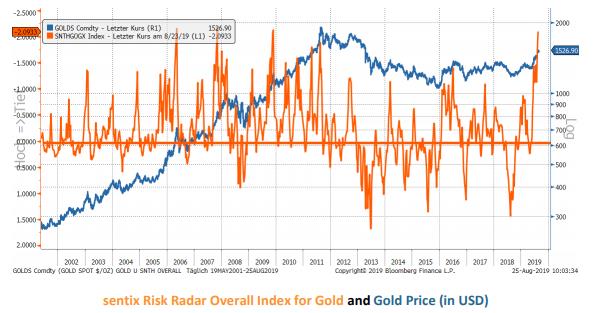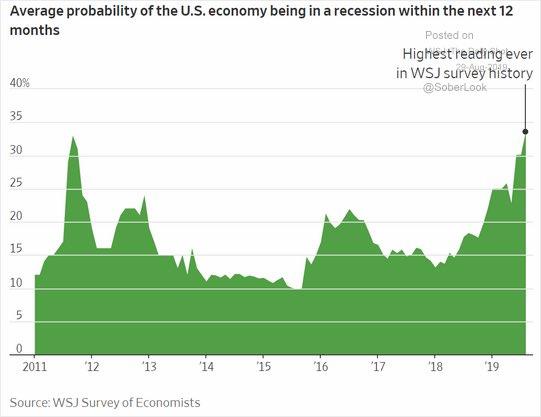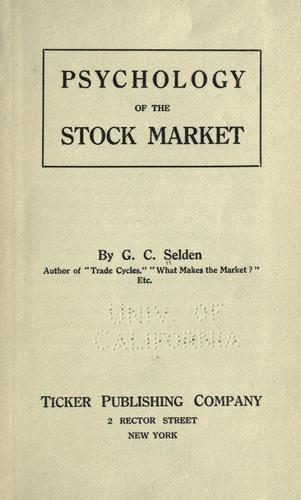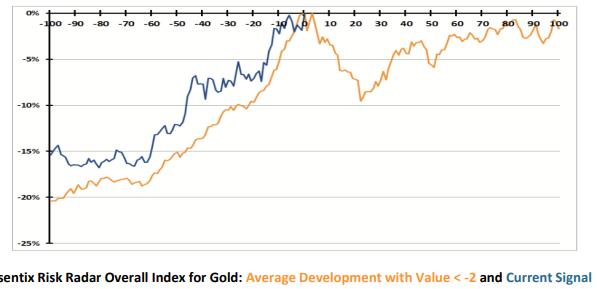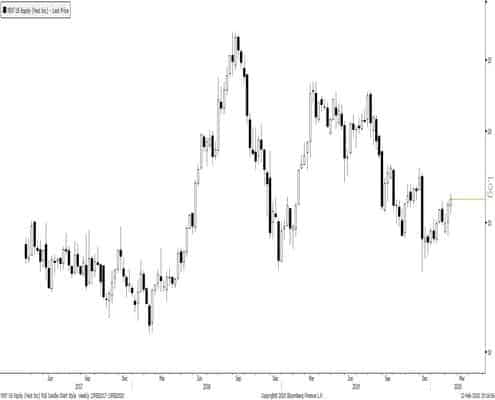Alex here with your latest Friday Macro Musings.
Latest Articles —
A Monday Dozen [CHART PACK] – In this week’s Monday Dozen we take a look at short-term sentiment (still too bullish!), longer-term sentiment (getting pretty bearish), indications of a weakening US economy, credit stress, a long opportunity in the pound, a crowded consensus, and 250-years of stock and bond correlations…
Adaptability Versus Optimization: The Cockroach Approach – I share a passage from an article about risk, specifically that most dangerous kind of risk, that which we cannot see. And then I talk about why you should approach markets like a cockroach.
Articles I’m reading —
After a long period of silence, Tim Urban, writer and stick-figure artist extraordinaire over at one of my favorite blogs Wait But Why, has returned with the first in what looks to be a long series of posts looking to explore the big question of our time: why is society so damn divided?
In standard Wait But Why fashion, Tim kicks off the investigation starting way out in left field, telling the story of genes. Here’s the link and a cut from the post.
“The problem is that the animal world isn’t really an animal world—it’s a world of trillions of strands of genetic information, each one hell-bent on immortality. And in a universe that wants to turn order into chaos whenever possible, the immortality of anything—let alone a delicate and complex genetic code—is a constant uphill battle. Most of Earth’s gene strands don’t last very long, and genes that weren’t talented enough at the immortality game are long gone. The genes on Earth today are the miracle outliers on both the motivation and talent front—such incredible survival specialists that they’re currently almost four billion years old and counting.”
Also, I highly recommend giving General Mattis’ latest essay titled Democracy and the Threat of Tribalism a read. It was published in the WSJ this last week and offers a thoughtful examination of the sorry state of our current geopolitical environment. Here’s the link and an excerpt.
“An oft-spoken admonition in the Marines is this: When you’re going to a gunfight, bring all your friends with guns. Having fought many times in coalitions, I believe that we need every ally we can bring to the fight. From imaginative military solutions to their country’s vote in the U.N., the more allies the better. I have never been on a crowded battlefield, and there is always room for those who want to be there alongside us.”
Oh, and Ray Dalio was back this week with more long-term debt cycle and 1930s analogies talk (link here).
Charts I’m looking at—
So this is interesting… A recent WSJ survey shows that economists are very bearish; more economists are predicting a recession in the next 12-months than at any other time in the history of the survey.
If you’ve just crawled out from under a rock and don’t know how bad economists are at predicting where the economy is headed then I’d suggest giving this 2018 IMF paper titled How Well Do Economists Forecast Recessions? a quick read.
I don’t know about you but I’d prefer to fade this growing consensus.
Video I’m Watching —
This is a great short (sub 8 mins) TED Talk from JP Rangaswami who’s the head quant at Deutsche Bank I think. Anyways, JP talks about the importance of being discerning of the information we allow ourselves to consume, comparing our info intake to eating food.
In a world of 24/7 news, constant social media notifications pinging in our pockets (darn you twitter!!!), and just a general firehose of information swamping us with data, opinions, and cat videos ALL… DAY… LONG… it’s now more important than ever to control the info we ‘eat’. Especially for us traders/investors where 99.9999% of market “reporting” is rotten cabbage and does not serve us in any profitable way. Give the vid a watch (here’s the link).
Also, go and give Cal Newport’s book Deep Work a read. It’ll change your life.
Podcast I’m listening to —
I listened to two fantastic podcasts this week. The first was the latest episode of “The Portal” which is fast becoming my favorite podcast — Eric Weinstein is such a skilled interviewer. In this episode, Timur Kuran joins Eric to talk “The Economics of Revolution and Mass Deception” where they dive into the critically topical concept of “preference falsification” and how it can lead to a breakdown of complex systems; such as a democracy.
In a world like ours where it’s becoming dangerous to honestly express one’s views with others who may not share similar sentiments, it is incredibly important to understand the reverberating consequences of such intolerance of thought. This discussion complements the Rene Girard essays I shared last week. Kuran’s work is really an extension of Girard’s ideas on mimetic desire and violence. Here’s the link.
The second podcast I really enjoyed is Tim Ferriss’ latest with conservationist, wolf expert, and Montana Senator, Mike Phillips. Mike comes off as a salt of the earth kind of guy. One who is deeply knowledgeable about the important role that apex predators play in maintaining a healthy natural ecosystem. This conversation was a real pleasure to listen to (link here and h/t to Chase at @pineconemacro for the rec).
Book I’m reading —
Longtime MO readers will know that I have a soft spot in my heart for really old trading/investing/market books. Well, this week I’m excited to share a new (well, new to me) old market book that I stumbled across. It’s by a G.C. Selden and is titled “Psychology of the Stock Market”. It was published in 1912 and is still every bit as relevant today as it was back then. That’s because we (as in, us humans) haven’t changed one bit over the last 100 or so years, or the last 50,000 for that matter… I finished it in a day (it’s only 90 pages or so) and it’s a fantastic read.
Selden begins the book with the observation that “Human impulses lead to speculative disasters.” He notes that:
“The psychological aspects of speculation may be considered from two points of view, equally important. One question is, What effect do varying mental attitudes of the public have upon the course of prices? How is the character of the market influenced by psychological conditions?
A second consideration is, How does the mental attitude of the individual trader affect his chances of success? To what extent, and how, can he overcome the obstacles placed in his pathway by his own hopes and fears, his timidities and obstinacies?
These two points of view are so closely involved and intermingled that it is almost impossible to consider either one alone. It will be necessary to take up first the subject of speculative psychology as a whole and later to attempt to draw conclusions both as to its effect upon the market and its influence upon the fortunes of the individual trader.”
Here’s another great section where Selden describes with eye-opening lucidity just how the stock market “works.”
“In a sense, the market is always a contest between investors and speculators. The real investor, looking chiefly to interest return, but by no means unwilling to make a profit by buying low and selling high, is ready, perhaps, to buy his favorite stock at a price which will yield him six per cent on his investment, or to sell at a price yielding only four per cent. The speculator cares nothing about interest return. He wants to buy before prices go up and to sell short before they go down. He would as soon buy at the top of a big rise as at any other time, provided prices are going still higher.
As the market advances, therefore, one investor after another sees his limit reached and his stock sold. Thus the volumes of stocks to be carried or tossed from hand to hand by bullish speculators is constantly rolling up like a snowball. One the ordinary intermediate fluctuations, covering five to twenty dollars a share, these sales by investors are small compared with the speculative business…”
You can find the book on Amazon for less than $10. Give it a read.
Trade I’m considering —
Back in March, I was writing about the extremely bullish setup in gold (link here). That move has begun in earnest. In fact, it’s been on a complete tear, going nearly vertical over the last few months. While I believe gold is headed to new all-time highs in the future due to the fact that the global gravity well of negative rates is ultimately inescapable (barring any major shift in mon/fiscal policy) making gold quite attractive. It’s likely we see an extended pullback here in the very near future.
Sentiment, positioning, and technicals are at extremes. The Sentix Risk Radar Index (chart below) which measures a combo of sentiment, positioning, overconfidence, and relative strength is showing a -2.1std move. According to Sentix, a value of -2 or lower has only occurred five other times.
This chart shows the average price move and duration following a -2std move in these other instances.
If you’re long, you might want to pare back your exposure some. If you’re more short-term oriented, gold might be worth a shot at the short side on a technical break.
Quote I’m pondering —
“Once your brain has become accustomed to on-demand distraction, Nass discovered, it’s hard to shake the addiction even when you want to concentrate. To put this more concretely: If every moment of potential boredom in your life—say, having to wait five minutes in line or sit alone in a restaurant until a friend arrives—is relieved with a quick glance at your smartphone, then your brain has likely been rewired to a point where, like the “mental wrecks” in Nass’s research, it’s not ready for deep work—even if you regularly schedule time to practice this concentration.” ~ Cal Newport, Deep Work
Get off your phone and look up!!
If you’re not already, be sure to follow me on Twitter: @MacroOps. I post my mindless drivel there daily.
Have a great weekend.

